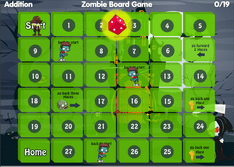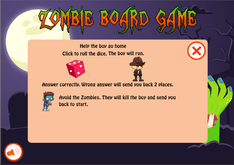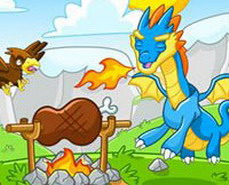Year 5 math games - math games for 9 to 10 year olds
Year 5 math games - math games for 9 to 10 year olds - U.K. Math activities for revisions at home or in school. Varied fun maths games online
The bulk of a child’s learnings since they started primary school (Year 1) will be tested throughout Year 5. This year will see multiple topics be refined and readied for your learner’s eventual progression through sixth grade and, in a broader sense, junior high. Year 5 is crucial for consolidating a child’s proficiency over topics such as arithmetic, basic geometry, identifying and processing measurements and other data, and various other skills.
As far as their arithmetic ability goes, your child will likely be suited to solving adding and subtracting numbers involving several digits, and mentally solve larger and larger numbers. They’re also sure to have become adept with multiplying and dividing with numbers containing four or more digits. In addition, they’ll be familiar with various prime numbers – ideally up to 100 – and understand the processes to determining whether a number is prime or composite. In light of these needs, we’ve prepared these Year 5 math games.
At this stage, a student can be capable of appreciating numbers as a whole in various new ways – through the Roman numeral system, for instance. A Year 5 learner is expected to decipher Roman numerals up to a thousand (the symbol M). They might be able to determine the year engraved on a statue or found in libraries or films if they are encoded in Roman numerals.
Various types of numbers can be made known at this time, including rational numbers, negative numbers and integers. While it looks simple, the number line will reveal several important relationships among the number types. The concept will also be used in real-life settings, such as in thermometers, altitudes, and distances.
A child is expected to be able to convert decimals into fractions and vice versa. Various other competencies, such as the ability to solve arithmetic problems involving mixed and improper fractions, and converting between the two, are also subject to being evaluated. With fractions and decimals familiarized, kids will move on to learning about ratios and their use in evaluating the relationship between two different quantities.
The order of operations is another important concept to pick up during the fifth grade. While regional varieties can occur – such as BODMAS in the United Kingdom, Australia, India and Pakistan; BEDMAS in New Zealand and Canada; and PEMDAS in the United States, the Philippines and other English-speaking countries – the overall idea behind this concept remains constant.
With regards to geometry, your child will gain more experience in solving for the areas of various polygons, such as triangles and quadrilaterals. They will also progress to determining the volume of three-dimensional shapes, including cylinders, pyramids, and cubes, among others.
Children are also taught how to measure and identify different types of angles in preparation for geometry topics in later years.












